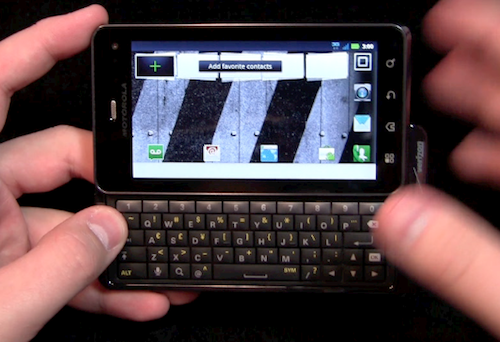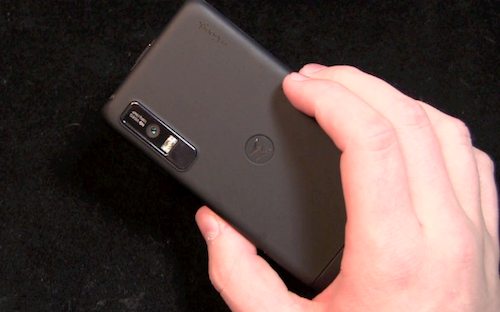
Though the term "DROID" now refers to a series of well-marketed Verizon smartphones - or perhaps more commonly, a misnomer for "Android" itself - there was a time in late 2009 when the original Motorola DROID was the only member of the family. It was Verizon's savior of sorts; the device that kept millions of customers from defecting to AT&T for the iPhone. Fast forward to today, and the DROID 3 enters the market alongside a slew of other DROID and non-DROID Android phones. Despite the flooded market, the DROID 3 comes to market ready to fight. Powered by a 1 GHz dual-core TI OMAP processor, the DROID 3 has a new 4-inch qHD display, 8-megapixel camera with 1080p HD video recording capabilities, front-facing camera, an improved QWERTY keyboard, and Android 2.3 (Gingerbread).
I've spent some time with the new Motorola DROID 3, and I'm pleased to say it's a nice replacement to the original DROID line. Can it bring the original DROID back into the conversation, and perhaps back into the flagship spotlight? Here's what I've discovered so far:
- Anything related to design is obviously subjective, but I feel like Motorola did a good job bridging together the "too industrial" design of the DROID 1 and "too toy-like" design of the DROID 2. DROID 3 has a reasonable amount of smooth curves, but retains a professional look.
- Motorola has upped the ante with a 4-inch qHD display (540 x 960 pixels), which is a great balance between the range of display sizes on the market. It's much more pixelated than competing technologies like Super AMOLED Plus and Retina Display, but is still an improvement.

- DROID 3's keyboard is one of the best on the market. The keys are perfectly spaced, the size of the device makes it perfect in the hand, and the keys themselves are tactile and large, making it easy to travel across the keyboard. It's a HUGE improvement over the first two devices.
- Motorola has always been strong in the call quality and reception departments, and the DROID 3 doesn't disappoint. I took the phone to a Verizon trouble spot in North Charlotte, and had no problem making a call, despite the occasional chop and audio cutout.

- DROID 3 ships with a 1,540 mAh battery, and with moderate use, you should be able to make it into the evening before having to re-charge the phone. If you're a heavy user, Verizon and Motorola offer a 1,930 mAh extended battery, and it provides a few extra hours of juice with virtually no added bulk. I have two DROID 3 units - one with an extended battery, and one without - and thus far, no one has been able to tell the difference between the two.
- I'm going to get some feedback from this one, but I'm not surprised that Motorola didn't include 4G LTE connectivity. In fact, I'll go as far as to say that I'm glad they didn't. Despite what the advertisements portray, LTE is still very much in its infancy, and with that comes things like bulky first-generation 4G radios and the random connectivity issues that I often talk about. Motorola was smart to stick with the "tried and true" route. Not only did it afford Motorola the ability to make it thinner, but Verizon has an extensive 3G coverage map, and battery life is spared as a result of choosing 3G over 4G. If you really want the 4G connectivity, the DROID Bionic is on the radar, and should be here soon.
Stay tuned for more coverage on the DROID 3, and be sure to check out the unboxing video!


